
Echinopsis bonnieae Photo by: Agócs György
Rebutialand - Cactus collection.
Origin and Habitat: Argentina, Prov. of Catamarca: Dept. Tinogasta, Rio Guachin, Loro Huasi, in the mountains around the Fiambalá valley, in the Sierra de Fiambalá and in the Sierra de Narváez.
Habitat: Grows along with a very sparse vegetation Puna bonnieaeSN|1023]]SN|1023]], Echinopsis leucanthaSN|8246]]SN|8246]], Pterocactus tuberosusSN|1126]]SN|1126]], Tephrocactus geometricusSN|14349]]SN|14349]], Cumulopuntia sp., Maihueniopsis sp. and Opuntia sulphurea on gravel slopes, in a very drained and arid soil (composed of clay, sand and stones) at 1700 - 2.400 m ASL.
Synonyms:
See all synonyms of Echinopsis bonnieae
Description: Echinopsis bonnieaeSN|15820]]SN|15820]] (Lobivia famatimensis var. bonniaeSN|3315]]SN|15818]]) is a small solitary or branched, columnar geophytic cactus. It is related to Lobivia famatimensisSN|15818]]SN|3315]], but clearly distinguished from it by the narrow neck that separates the large tuberous roots from the stem and for the tall cylindrical stem.
Stem: Thin, cylindrical, usually not branched, with a constant diameter ,but separated from the roots by a narrow collar. 10(-40) cm in height, diameter 1,5-2,5cm. The apex is depressed. The stems can be deciduous in the dry season, as is usual for the genus Pterocactus.
Areoles: On small tubercles, arranged in about 30 spiral lines whit short white hairs.
Spines: About 10, pectinate pink-brown that turn grey, 1-1,5mm long.
Roots: Tuberous, 10-15cm long, up to 5-15 mm in diameter.
Flower: Diurnal, silver-yellow, shining, outer tepals are bronze, diameter and height 2,5 (-4) cm. Stigma yellow with red stylus.
Blooming time: May.
Fruits: Ovate 1,2-1, 8cm long, 0,6-1,1 cm in diameter, dark violet, longitudinally dehiscent. Covered by hairy scales.
Seeds: Seed black, up to 400 per fruit.
Subspecies, varieties, forms and cultivars of plants belonging to the Echinopsis famatimensis group
Bibliography: Major references and further lectures
1) Stuart Max Walters “The European garden flora. 3.[Angiospermae], Dicotyledons. [Casuarinaceae to Aristolochiaceae]” Cambridge University Press, 1989
2) Edward Anderson “The Cactus family” Timber Press, Incorporated, 2001
3) Roberto Kiesling, D.J. Fergusom & O. Ferrari "The first geophytic Lobivia (Cactaceae)" cact. Succ. J.(USA) 73:4 Jul-Aug. 2001 http://www.ibiologia.unam.mx/slccs/www/material_bib/k/1_Kiesling.pdf retrived on 16-Jun-2013
4) James Cullen, Sabina G. Knees, H. Suzanne Cubey "The European Garden Flora Flowering Plants: A Manual for the Identification of Plants Cultivated in Europe, Both Out-of-Doors and Under Glass" Cambridge University Press, 11/Aug/2011
5) David R Hunt; Nigel P Taylor; Graham Charles; International Cactaceae Systematics Group. "The New Cactus Lexicon" dh books, 2006
 Lobivia bonnieae Newly described with thin cylindrical body. Field number: FK96 Locality: (Kuhas) Fiambla, Rioja, Prov. Catamarc Photo by: Valentino Vallicelli
Lobivia bonnieae Newly described with thin cylindrical body. Field number: FK96 Locality: (Kuhas) Fiambla, Rioja, Prov. Catamarc Photo by: Valentino Vallicelli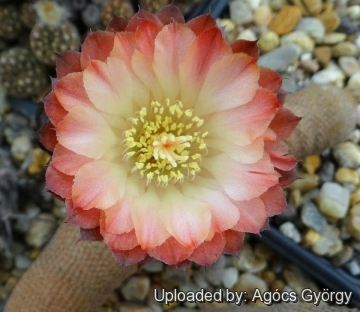 Echinopsis bonnieae Photo by: Agócs György
Echinopsis bonnieae Photo by: Agócs György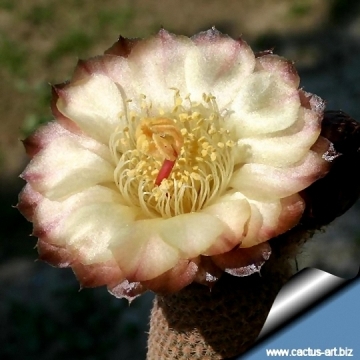 Echinopsis bonnieae Photo by: Cactus Art
Echinopsis bonnieae Photo by: Cactus Art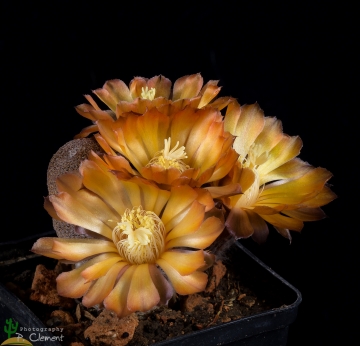 Lobivia famatimensis v.bonnaie ROS 123.2 Photo by: Peiffer Clement
Lobivia famatimensis v.bonnaie ROS 123.2 Photo by: Peiffer Clement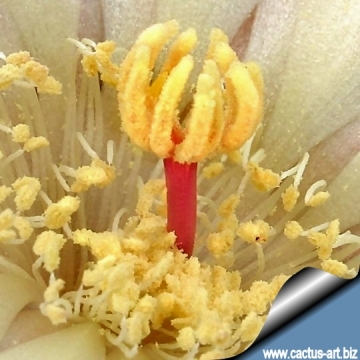 Echinopsis bonnieae Photo by: Cactus Art
Echinopsis bonnieae Photo by: Cactus Art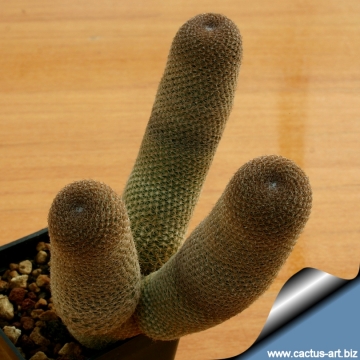 Echinopsis bonnieae Photo by: Cactus Art
Echinopsis bonnieae Photo by: Cactus Art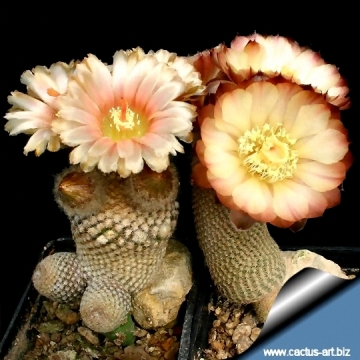 Along with Eriosyce duripulpa. An example of evolutionary convergence ? Photo by: Cactus Art
Along with Eriosyce duripulpa. An example of evolutionary convergence ? Photo by: Cactus Art Echinopsis bonnieae Photo by: Diego Armentano
Echinopsis bonnieae Photo by: Diego ArmentanoCultivation and Propagation: Very slow growing. The Lobivia famatimensisSN|3315]]SN|3315]] have a thick taproot and are susceptible to over-watering. Sometimes they are grafted to avoid root rot problems. Suited for sunny-bright exposure; they can tolerate light shade. They like warmth (recommended minimum winter temperature 5° C). But plant kept perfectly dry can easily survive in winter night temperatures below 0° C (In our greenhouse there was no damage at -10° C for a few hours in the winter of 2002-2003 ) They prefer airy exposures. Water regularly in summer, but do not overwater, it prefer a completely dry place during winter. Suited for sunny-brightly exposure; can tolerate light shade.
Pests & diseases:**Lobivia famatimensisSN|3315]]SN|3315]]sis is especially prone to rot, therefore, underpot in a smaller but deep pot filled with a highly gritty compost and much drainage, to accommodate its tap root.
Propagation: ***Seeds or graft. Seedlings of the var. bonnieae grow faster than other Lobivia famatimensisSN|3315]]SN|3315]]. Seeds can be sown in the spring or summer. The seedlings should not be disturbed until they are well rooted, after which they can be planted separately in small pots.
Your Photos

by Julio C. García
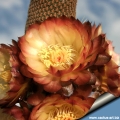
by Cactus Art
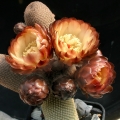
by Valentino Vallicelli
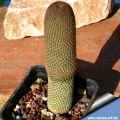
by Cactus Art

by Cactus Art
























